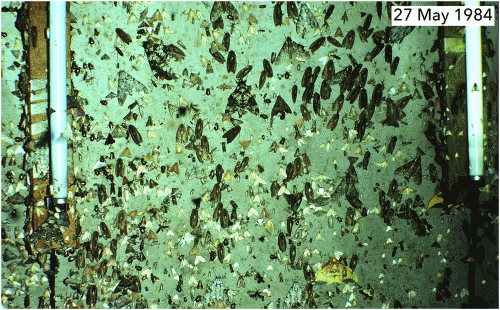Ocean plastic pollution reaches “unprecedented” levels – The Great Pacific Garbage Patch is now so huge and permanent that a coastal ecosystem is thriving on it – “The problem is getting bigger and bigger by the minute”
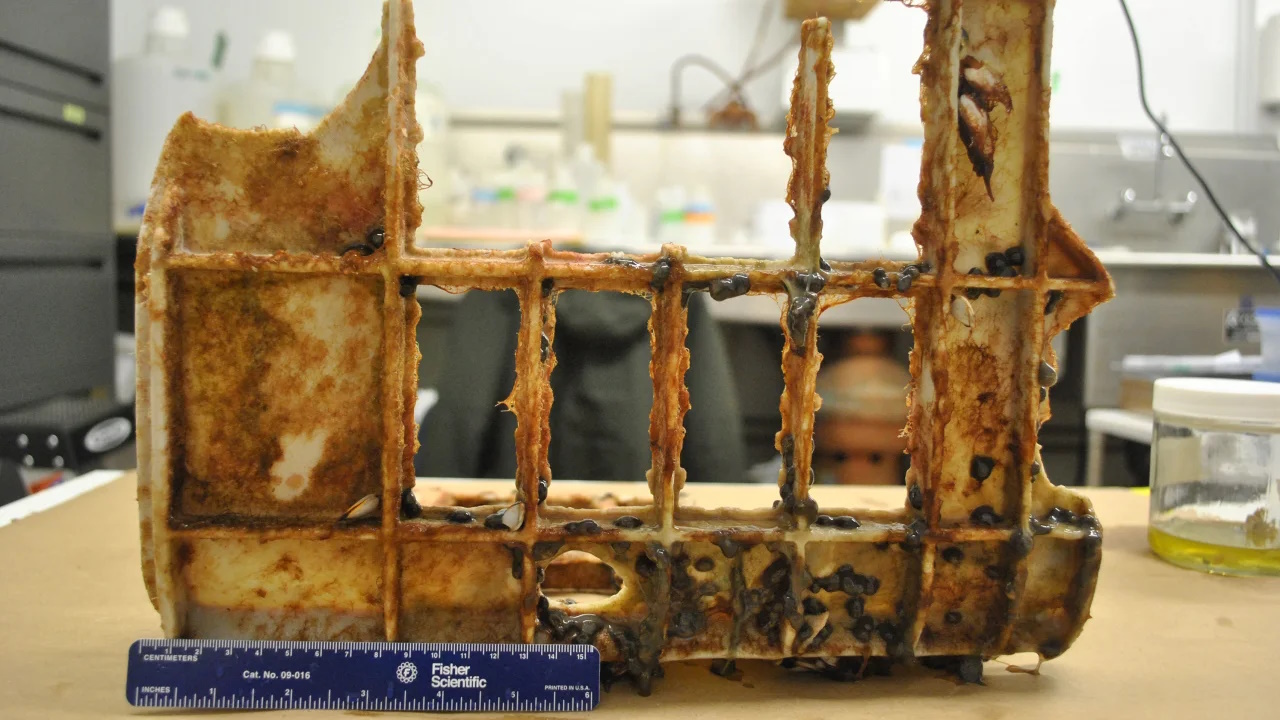
By Ivana Kottasová
18 April 2023
(CNN) – Scientists have found thriving communities of coastal creatures, including tiny crabs and anemones, living thousands of miles from their original home on plastic debris in the Great Pacific Garbage Patch – a 620,000 square mile swirl of trash in the ocean between California and Hawaii.
In a new study published in the Nature Ecology & Evolution journal on Monday, a team of researchers revealed that dozens of species of coastal invertebrate organisms have been able to survive and reproduce on plastic garbage that’s been floating in the ocean for years.
The scientists said that the findings suggest plastic pollution in the ocean might be enabling the creation of new floating ecosystems of species that are not normally able to survive in the open ocean.
Unlike organic material that decomposes and sinks within months or, at most, a few years, plastic debris can float in the oceans for a much longer time, giving creatures the opportunity to survive and reproduce in the open ocean for years.
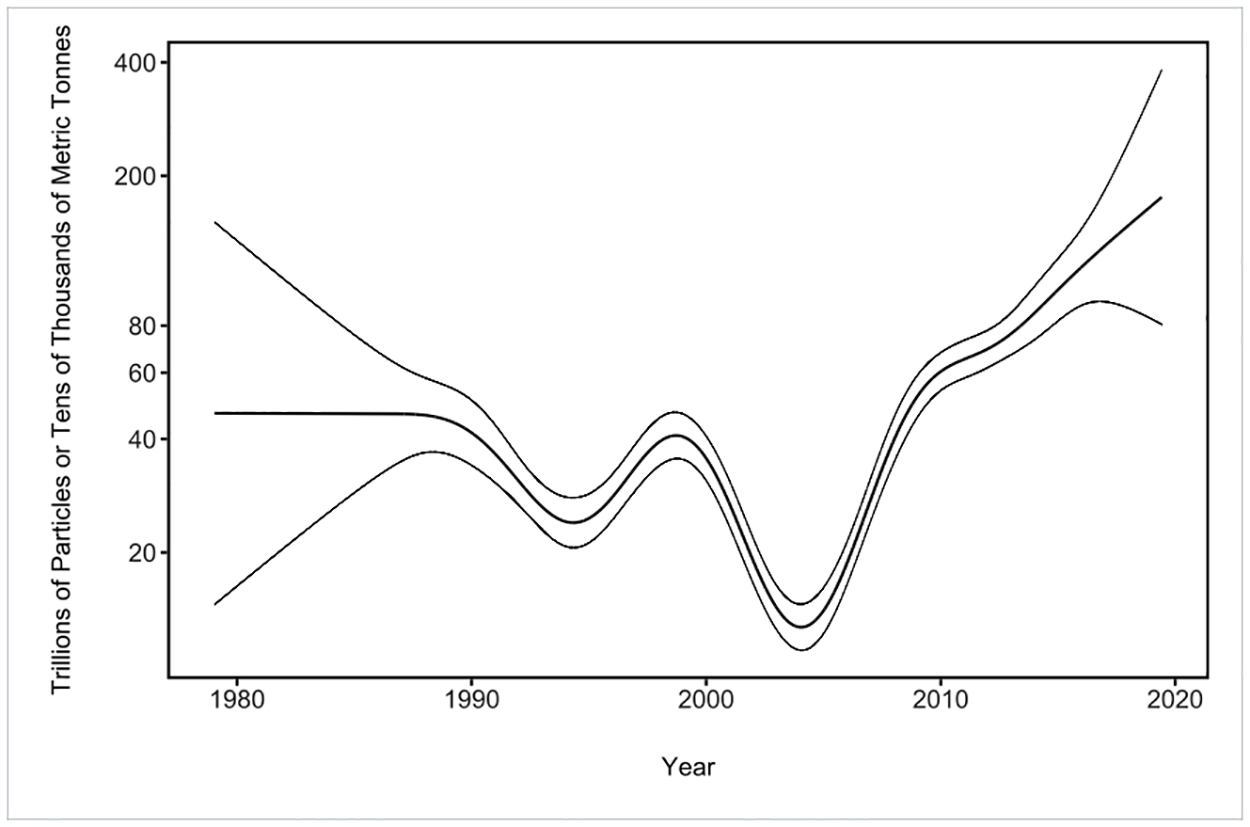
“It was surprising to see how frequent the coastal species were. They were on 70 percent of the debris that we found,” Linsey Haram, a science fellow at the National Institute of Food and Agriculture and the study’s lead author, told CNN.
Haram and her colleagues examined 105 items of plastic fished out of the Great Pacific Garbage Patch between November 2018 and January 2019. They identified 484 marine invertebrate organisms on the debris, accounting for 46 different species, of which 80% were normally found in coastal habitats.
“Quite a large percentage of the diversity that we found were coastal species and not the the native pelagic open ocean species that we were largely expecting to find,” Haram said.
They did still find a lot of open ocean species, Haram added. “On two thirds of the debris, we found both communities together … competing for space, but very likely interacting in other ways.”
Haram said that the consequences of the introduction of new species into the remote areas of the ocean are not yet fully understood.
“There’s likely competition for space, because space is at a premium in the open ocean, there’s likely competition for food resources – but they may also be eating each other. It’s hard to know exactly what’s going on, but we have seen evidence of some of the coastal anemones eating open ocean species, so we know there is some predation going on between the two communities,” she said.
How exactly the creatures get to the open ocean and how they survive there remains unclear. Whether, for example, they were just hitching a ride on a piece of plastic they attached themselves to by the coast, or whether they were able to colonize new objects once they were in the open ocean, is unknown.
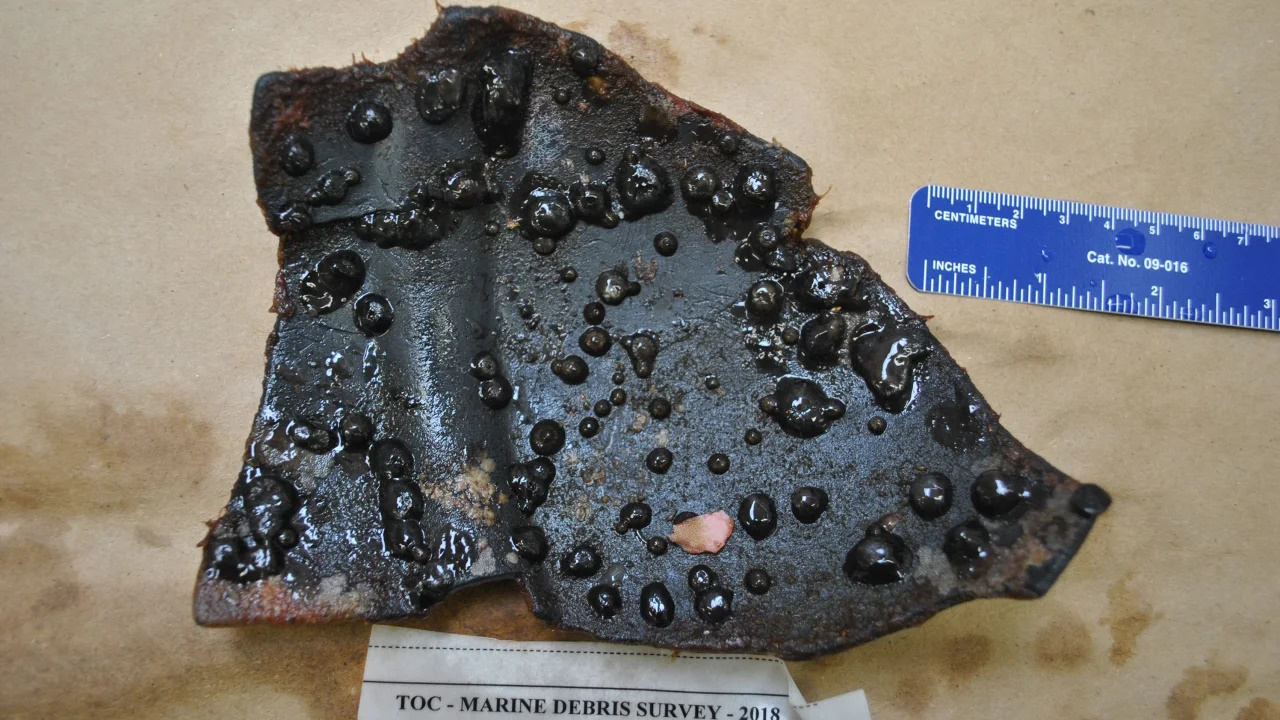
Oceans of plastic
The Great Pacific Garbage Patch, which is twice the size of Texas, is the largest accumulation of ocean plastic in the world.
The patch is bounded by an enormous gyre – the biggest of five huge, spinning circular currents in the world’s oceans that pull trash towards the center and trap it there, creating a garbage vortex.
It’s a mistake to think of the Great Pacific Garbage Patch as an island of trash, though, Matthias Egger, the head of environmental and social affairs at The Ocean Cleanup, a non-profit developing technologies to rid the oceans of plastic, told CNN.
“If you’re out there, what you see is just pristine blue ocean,” said Egger, who helped Haram’s research by collecting the samples in the patch, fishing them out with a net.
“You can think of it like the night sky. If you look up at night, you see all those white dots, that’s essentially what you see in the garbage patch. It’s not that dense, but there are a lot of them … out there, you start seeing more and more plastic the longer you look,” he said.
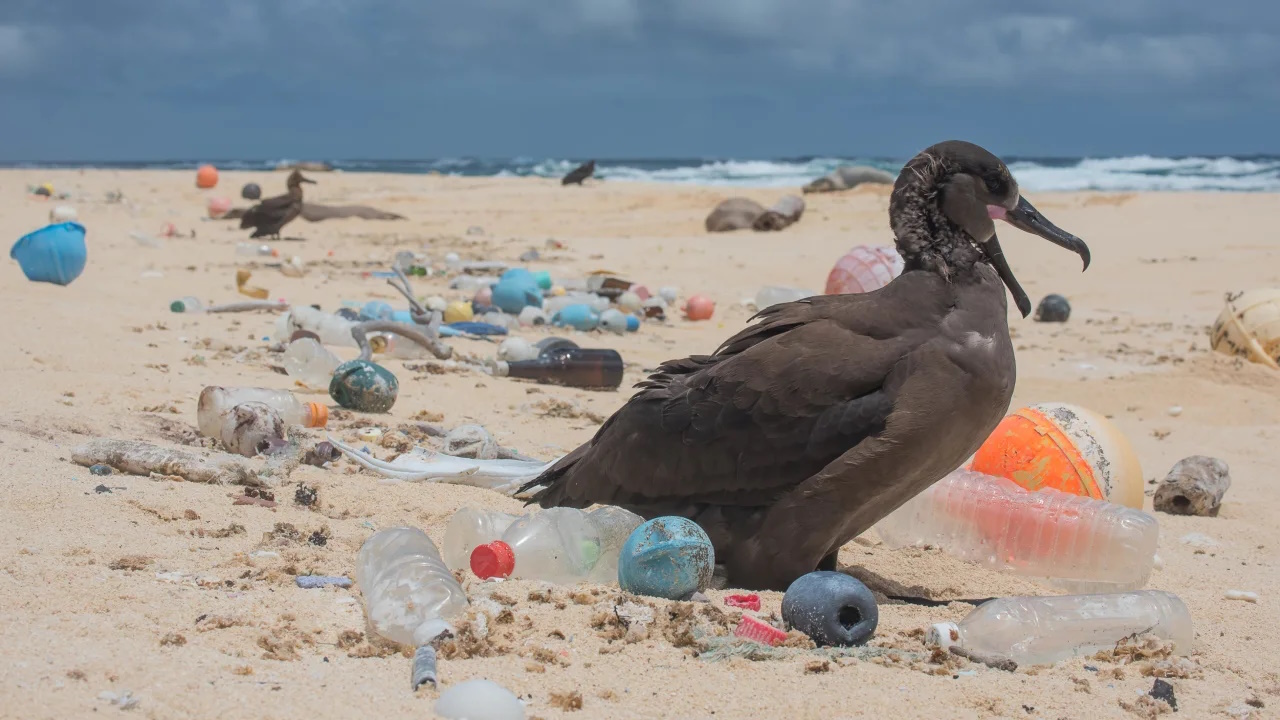
The Ocean Cleanup initiative estimates there are about 1.8 trillion pieces of plastic in the patch that weigh an estimated 80,000 tonnes. The majority of the plastic found in the patch comes from the fishing industry, while between 10% and 20% of the total volume can be traced back to the 2011 Japanese tsunami.
According to the United Nations Environment Programme (UNEP), the world produces around 460 million tons of plastic a year, a figure that — without urgent action – will triple by 2060.
Globally, only around 9% of plastic waste is recycled, according to UNEP. As much as 22% of all plastic waste is mismanaged and ends up as litter, with large amounts eventually making it into the oceans.
Scientists have warned there has been a “rapid and unprecedented” increase in ocean plastic pollution since 2005.
“The problem is getting bigger and bigger by the minute,” Egger said. “We see turtles that are entangled in ghost fishing nets. Sometimes it’s even just turtle carcasses. We see ingestion of plastic fragments. Then there’s also the pollutants – chemicals.” […]
A study published last month said that without urgent policy action, the rate at which plastics enter the oceans could increase by around 2.6 times between now and 2040. [more]
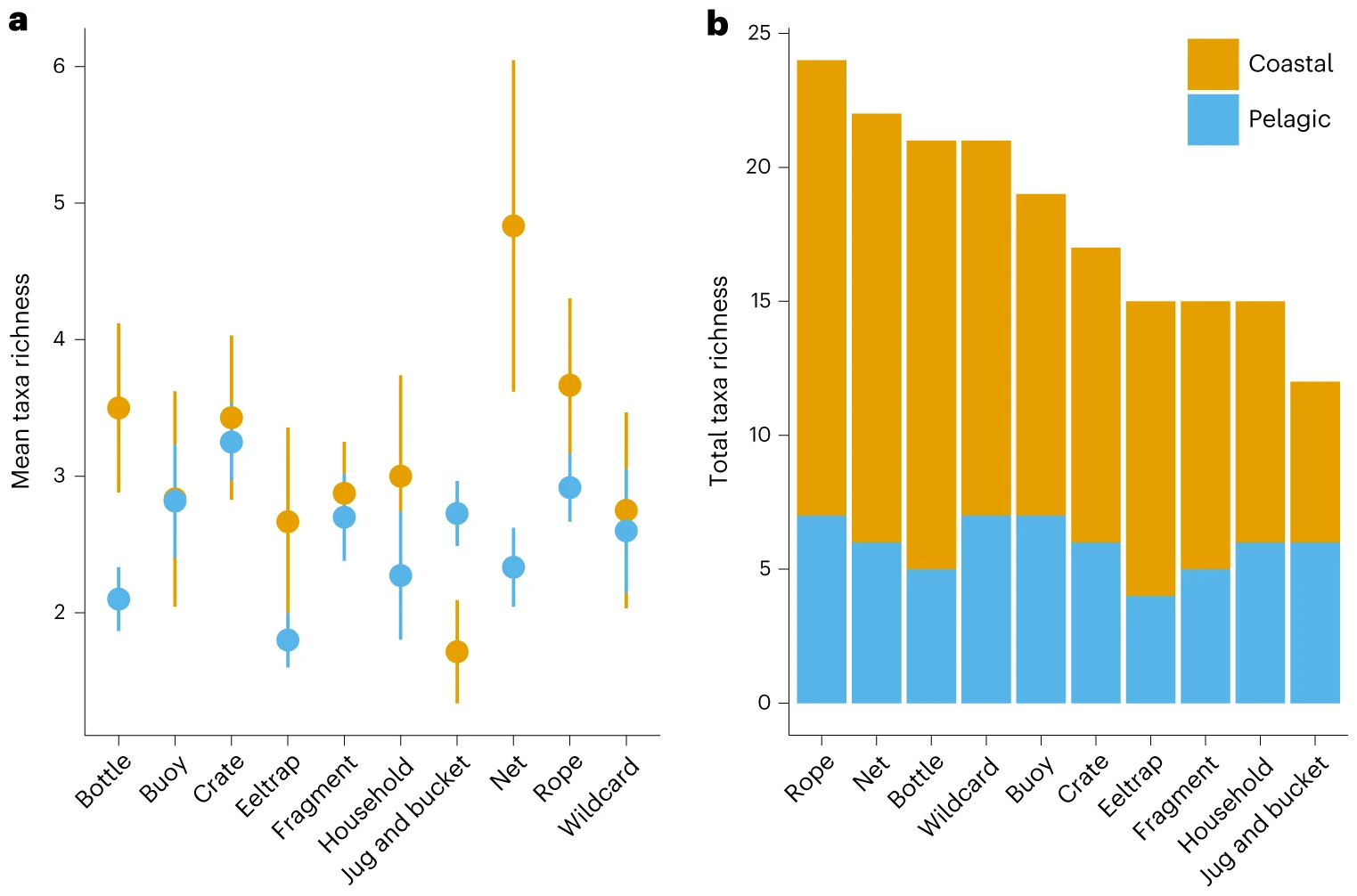
Extent and reproduction of coastal species on plastic debris in the North Pacific Subtropical Gyre
ABSTRACT: We show that the high seas are colonized by a diverse array of coastal species, which survive and reproduce in the open ocean, contributing strongly to its floating community composition. Analysis of rafting plastic debris in the eastern North Pacific Subtropical Gyre revealed 37 coastal invertebrate taxa, largely of Western Pacific origin, exceeding pelagic taxa richness by threefold. Coastal taxa, including diverse taxonomic groups and life history traits, occurred on 70.5% of debris items. Most coastal taxa possessed either direct development or asexual reproduction, possibly facilitating long-term persistence on rafts. Our results suggest that the historical lack of available substrate limited the colonization of the open ocean by coastal species, rather than physiological or ecological constraints as previously assumed. It appears that coastal species persist now in the open ocean as a substantial component of a neopelagic community sustained by the vast and expanding sea of plastic debris.
Extent and reproduction of coastal species on plastic debris in the North Pacific Subtropical Gyre
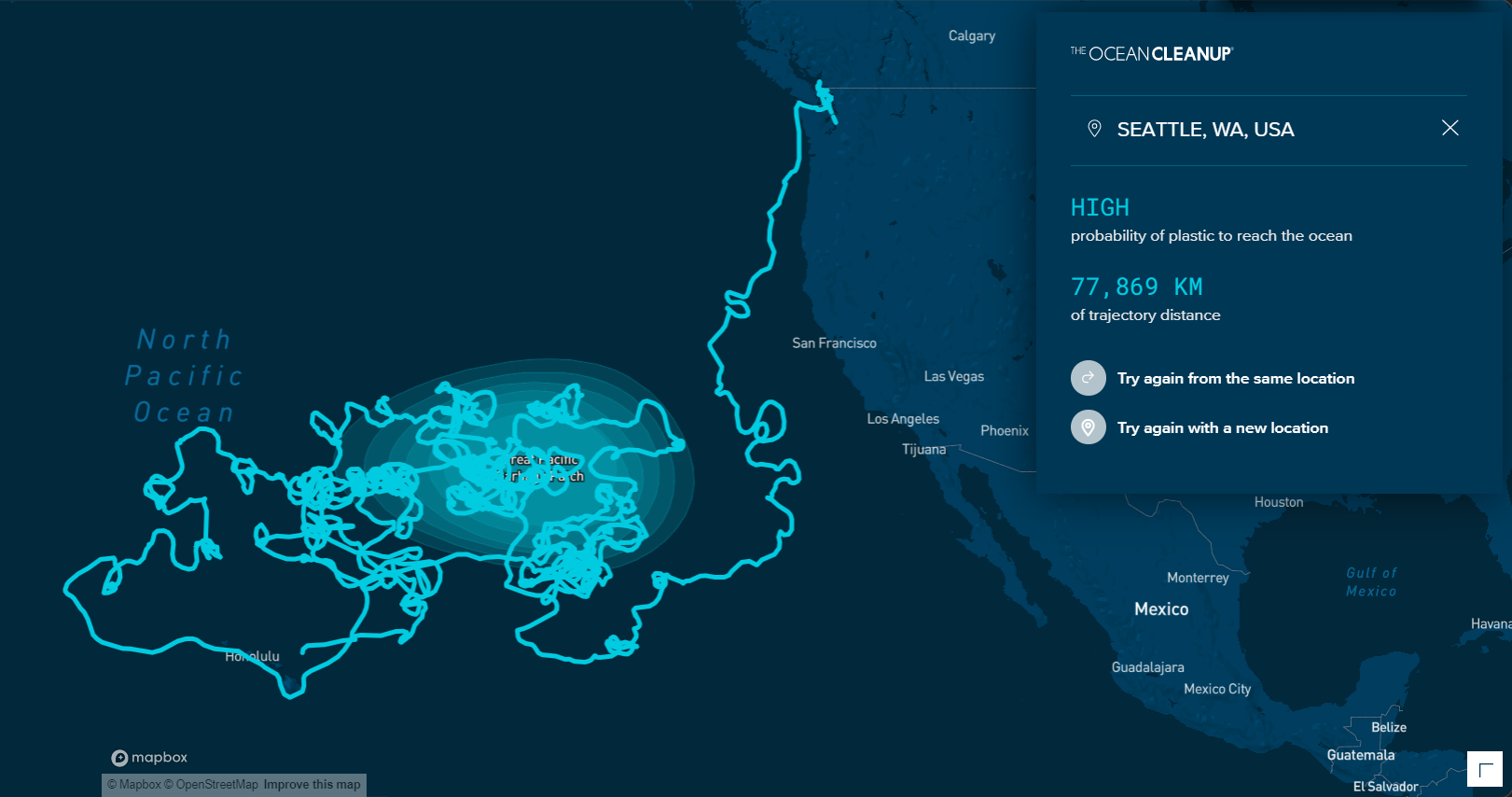
More than 170 trillion plastic particles found in the ocean as pollution reaches “unprecedented” levels
By Laura Paddison
8 March 2023
(CNN) – The world’s oceans are polluted by a “plastic smog” made up of an estimated 171 trillion plastic particles that if gathered would weigh around 2.3 million tons, according to a new study.
A team of international scientists analyzed global data collected between 1979 and 2019 from nearly 12,000 sampling points in the Atlantic, Pacific and Indian oceans and the Mediterranean Sea.
They found a “rapid and unprecedented” increase in ocean plastic pollution since 2005, according to the study published Wednesday in the journal PLOS ONE.
“It is much higher than previous estimates,” Lisa Erdle, director of research and innovation at the 5 Gyres Institute and an author on the report, told CNN.
Without urgent policy action, the rate at which plastics enter the oceans could increase by around 2.6 times between now and 2040, the study found.
Plastic production has soared in the last few decades, especially single-use plastics, and waste management systems have not kept pace. Only around 9% of global plastics are recycled each year.
Huge amounts of that plastic waste end up in the oceans. The majority comes from land, swept into rivers – by rain, wind, overflowing storm drains, and littering – and transported out to sea. A smaller but still significant amount, such as fishing gear, is lost or simply dumped into the ocean.
Once plastic gets into the ocean, it doesn’t decompose but instead tends to break down into tiny pieces. These particles “are really not easily cleaned up, we’re stuck with them,” Erdle said.
Marine life can get entangled in plastic or mistake it for food. Plastic can also leach toxic chemicals into the water.
And it isn’t just an environmental disaster; plastic is also a huge climate problem. Fossil fuels are the raw ingredient for most plastics, and they produce planet-heating pollution throughout their lifecycle – from production to disposal. […]
Judith Enck, a former EPA regional administrator and now-president of Beyond Plastics, a non-profit focused on research and consumer education, said that policies to reduce the amount of plastic produced in the first place are the only real solution, especially as companies are continuing to find new ways to pump more plastics into the market.
“The plastics and petrochemical industries are making it impossible to curb the amount of plastic contaminating our oceans,” Enck told CNN by email.
“New research is always helpful, but we don’t need to wait for new research to take action — the problem is already painfully clear, in the plastic accumulating in our oceans, air, soil, food, and bodies.” Enck said. [more]
A growing plastic smog, now estimated to be over 170 trillion plastic particles afloat in the world’s oceans—Urgent solutions required
ABSTRACT: As global awareness, science, and policy interventions for plastic escalate, institutions around the world are seeking preventative strategies. Central to this is the need for precise global time series of plastic pollution with which we can assess whether implemented policies are effective, but at present we lack these data. To address this need, we used previously published and new data on floating ocean plastics (n = 11,777 stations) to create a global time-series that estimates the average counts and mass of small plastics in the ocean surface layer from 1979 to 2019. Today’s global abundance is estimated at approximately 82–358 trillion plastic particles weighing 1.1–4.9 million tonnes. We observed no clear detectable trend until 1990, a fluctuating but stagnant trend from then until 2005, and a rapid increase until the present. This observed acceleration of plastic densities in the world’s oceans, also reported for beaches around the globe, demands urgent international policy interventions.


